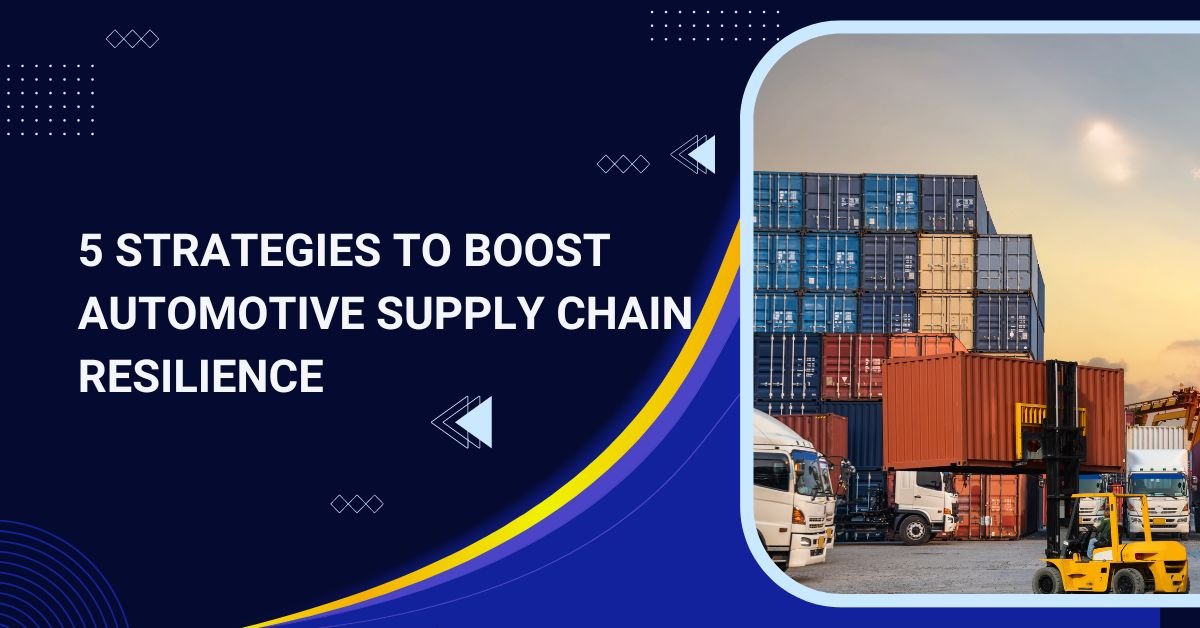
In an era of globalized commerce, supply chain disruptions pose significant challenges to businesses across various industries. These disruptions can be caused by natural disasters, geopolitical events, pandemics, or other unforeseen circumstances. In order to mitigate the impact of such disruptions, companies need to adopt proactive strategies to enhance the resilience of their supply chains. This article explores effective ways to reduce the risk of supply chain disruptions, ensuring a smoother and more resilient business operation.
What is Supply Chain Disruption in the Automotive sector?
Supply chain disruptions in the automotive industry involve unforeseen events or challenges that hinder the smooth flow of materials and products throughout the supply network. These disruptions, arising from factors like natural disasters, geopolitical tensions, or global crises, can significantly impact production, distribution, and operational efficiency. Issues such as delays in manufacturing, shortages of critical components, and increased costs can result from these disruptions.
To address these challenges, automotive companies implement various strategies. These include diversifying suppliers, improving communication channels, implementing robust risk management practices, and leveraging advanced technologies. These measures aim to build resilient supply chains capable of withstanding unexpected disruptions, ensuring business continuity, and maintaining a competitive edge in the dynamic automotive industry.
What Are the Strategic Methods to Reduce Supply Chain Disruption?
Robust Risk Management
Developing comprehensive risk management strategies is fundamental to reducing the impact of supply chain disruptions. This involves conducting thorough risk assessments to identify vulnerabilities and creating contingency plans for various scenarios. Businesses should assess both internal and external risks, including geopolitical factors, economic uncertainties, and environmental considerations. Regularly updating and testing these contingency plans ensures that the organization is well-prepared to respond swiftly to unforeseen events.
Enhanced Visibility and Communication
Supply chain visibility is vital for identifying potential risks and disruptions in real-time. Implementing advanced technologies, such as IoT (Internet of Things) devices and blockchain, can provide end-to-end visibility, enabling companies to monitor the movement of goods and identify potential disruptions early on. Additionally, effective communication with suppliers, logistics partners, and other stakeholders is crucial. Building strong communication channels helps in quickly addressing issues, finding alternative solutions, and maintaining transparency throughout the supply chain network.
Sustainable Practices for Resilience
Sustainability and resilience go hand in hand. Adopting sustainable practices not only contributes to environmental responsibility but also increases supply chain resilience. Companies committed to sustainable sourcing, production, and transportation are often better equipped to navigate disruptions. Additionally, environmentally conscious practices can garner support from customers and stakeholders, strengthening the brand’s reputation in the long run.
Supplier Relationship Management (SRM)
Strong relationships with suppliers are a cornerstone of a resilient supply chain. Establishing a robust Supplier Relationship Management (SRM) system involves not only selecting reliable suppliers but also collaborating closely with them. This includes sharing information, setting clear expectations, and working together to identify and mitigate potential risks. By fostering strong relationships, companies can gain valuable insights, navigate challenges more effectively, and build a network of trusted partners.
Technology Integration
Leveraging advanced technologies is essential for enhancing supply chain resilience. Implementing supply chain management software, artificial intelligence, and predictive analytics can provide actionable insights and real-time data. These technologies enable businesses to identify potential disruptions, optimize processes, and make informed decisions. Automation can also play a crucial role in minimizing manual errors and improving overall efficiency in supply chain operations.
Cybersecurity Measures
In the era of digitalization, safeguarding against cybersecurity threats is a pivotal element of maintaining resilience in the supply chain. With the increasing digitization of supply chains, the vulnerability to cyberattacks rises. It is imperative for companies to allocate resources to implement strong cybersecurity measures, mitigating the risk of unauthorized access and ensuring the secure operation of digital systems. Key elements of a resilient digital supply chain encompass routine audits, employee training initiatives, and the adoption of advanced cybersecurity technologies. Addressing common supply chain issues such as cyber threats, becomes integral in fortifying the overall security and reliability of the supply chain in the digital age.
Continuous Monitoring and Adaptability
The business landscape is dynamic, and supply chain risks are constantly evolving. Continuous monitoring of the external environment, geopolitical events, and industry trends is crucial for staying ahead of potential disruptions. Companies should also be adaptable and agile in their approach, ready to adjust strategies and operations in response to changing circumstances. This adaptability is key to minimizing the impact of disruptions and ensuring long-term supply chain resilience.
Inventory Optimization
Maintaining optimal inventory levels is a nuanced challenge, with excess stock tying up capital and increasing carrying costs, and insufficient inventory rendering a company vulnerable to supply chain disruptions in the automotive industry. Striking the right balance through inventory optimization is crucial. Utilizing advanced forecasting models allows companies to precisely predict demand fluctuations and adjust inventory levels accordingly. Additionally, incorporating just-in-time inventory practices can streamline operations, reduce carrying costs, and improve overall agility within the automotive supply chain ecosystem.
In conclusion, safeguarding against supply chain disruptions in the automotive industry necessitates a holistic and proactive strategy. This involves diversifying suppliers, enhancing communication and visibility, implementing robust risk management strategies, optimizing inventory, fostering strong supplier relationships, integrating advanced technologies, and maintaining adaptability. These collective measures are indispensable for constructing a resilient supply chain within the automotive sector, enabling businesses to effectively confront unforeseen challenges and uphold a competitive edge in the dynamic global business landscape.


